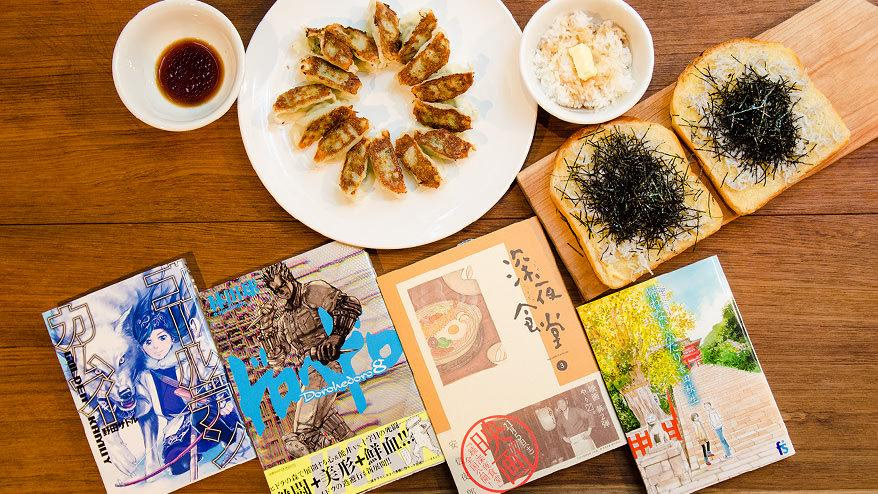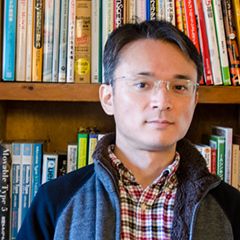I'm Murakami, the library committee chairman.
Last month was "Autumn, the Season of Culture," so we held a reading group with the theme of books related to movies.
This month, we decided on a food-related book theme, taking advantage of the autumn season's appetite. For some reason, everyone chose manga. Since we were there, we decided to prepare as many dishes as possible that appear in the manga.
Now, let's line them up on the table and start the reading group.
Participants
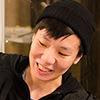
In winter, the signature look is a hat and a wrapped scarf. Wada (director)
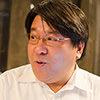
If you're looking for a bar in Akabane or Tanukikoji, ask this guy, Uwai (Project Manager)
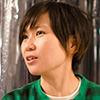
Nakai (designer) is someone who has been thinking about the future of beer every day since a certain hackathon.

Murakami (Quality Control Department Leader, Library Committee Chair) has a unique silent walking style that allows him to approach people without them even realizing it.
4 people:
Now, let's start the reading group!
Presentation Time
After the 40 minutes of reading, each person will have 5 minutes to introduce their book.
- Gyoza Man, a fairy who makes gyoza delicious. The magical world is a feast of bizarre characters.
"Dorohedoro" (reviewed by Aya Wada) - The late-night diner is a human crossroads. It has the feel of a nostalgic favorite restaurant.
"Midnight Diner" (introduced by Masayuki Kamii) - Life is full of food, funerals, and money. The daily life of four sisters living in a seaside town.
"Our Little Sister" (reviewed by Yoshiko Nakaniwa) - "Now, let's cut it up and eat it." What exactly is this meatball hotpot in a manga where someone peels human skin?
"Golden Kamuy" (introduced by Isamu Murakami)
Gyoza Man, a fairy who makes gyoza delicious. The magical world is a feast of bizarre characters.
"Dorohedoro" (reviewed by Aya Wada)
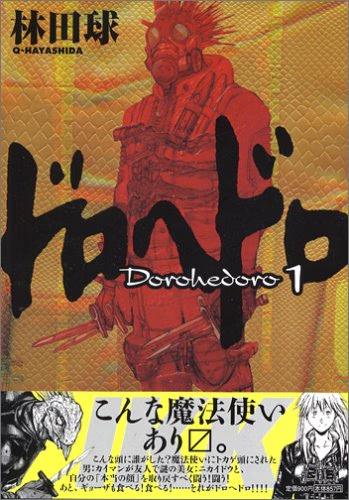
"Dorohedoro" by Kyu Hayashida, Shogakukan, 2002 ( Amazon )
 Wada
WadaAlthough it's not a cooking manga, I brought along "Dorohedoro."
In a world where the wizard's world and the human world exist, people who are used as test subjects for magic have their faces and appearances changed. The man with the crocodile-like (lizard?) head on the cover has also lost his memory, and does not know why he has become like this, so he searches for the cause.
As the story progresses, many more characters appear, each with their own story...There are so many fascinating characters, it's my favorite manga to date.
So, the main character (the one with the crocodile head) is friends with a girl who runs a diner called "Hungry Bug," and the shiso gyoza they serve there are incredibly delicious, and are his favorite food.
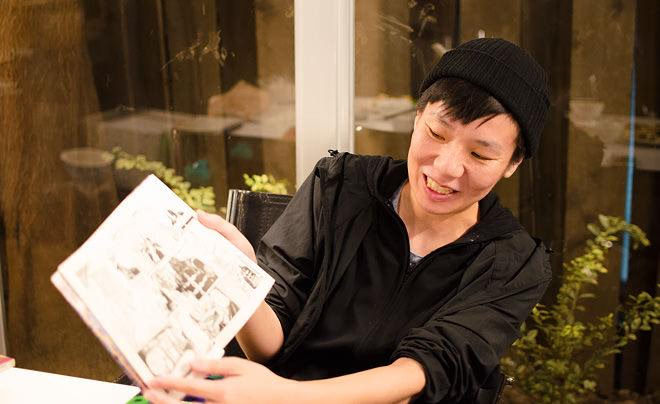
 Wada
WadaAt the end of volume 5, the main character picks up some perilla leaves and there is a section where he actually shows how to make perilla gyoza, and there are even people online who have posted comments like, "I read the manga and tried making it." Since I read this manga, I also add perilla leaves when making gyoza at home, and it's actually really delicious (laughs).
The restaurant's staff meals include dishes like gyoza burger rice bowls, which use gyoza hamburger steaks, and these also look really delicious.
There are a lot of grotesque depictions, and it's a pretty disgusting manga, but the food looks really delicious. Maybe it's because the manga is usually grotesque, so that's why it looks that way, but I always read it thinking how delicious it looks.There's also a character called Gyoza Man, who is like a gyoza fairy. He lives in the restaurant to make the gyoza taste better, and he's always whining about how "This guy eats for free!" and "He eats too much!", but no one can see him.
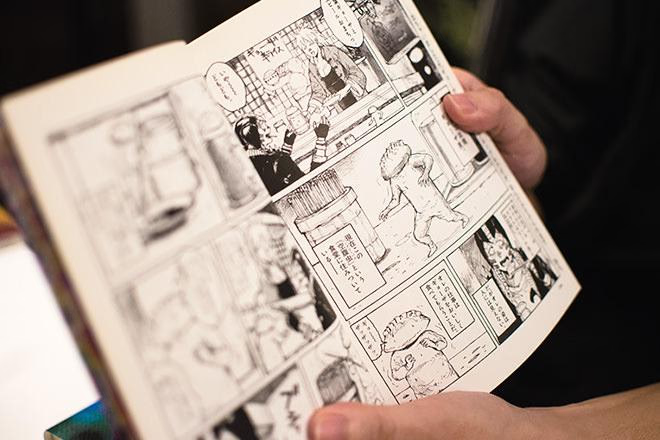
 Wada
WadaIt's not a cooking manga, but rather a manga that deepens the mystery of magic, and it has some strange characters and, how should I put it... it's a story that left a lasting impression on me because of the gyoza.
 Murakami
MurakamiIs the cover paper made like crocodile skin?
 Wada
WadaYes, it is quite rough.
 courtyard
courtyardFor now, enjoy your meal.
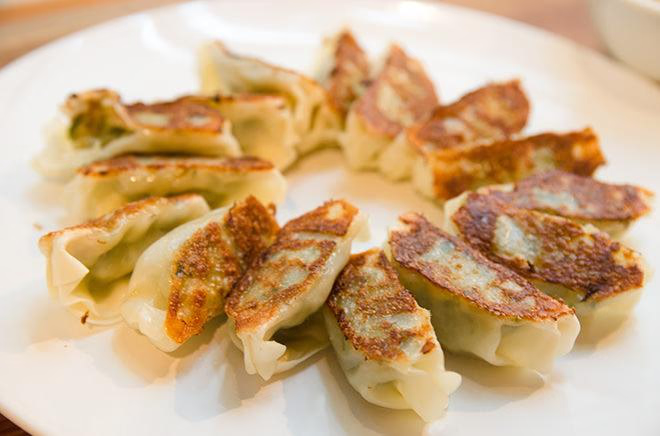
 Wada
WadaApparently someone went out of their way to buy this one with shiso leaves in it.
 courtyard
courtyardYes, I was thinking of adding shiso to regular gyoza and re-baking them, but it seems it's quite popular.
 Kamii
KamiiOh, delicious.
 Wada
WadaThe main character eats these gyoza when he is tired.
This manga only comes out about once a year, and the 21st volume was released recently, but it finally started to make sense around volume 20. Up until then, it was all a mystery...it turns out the main character is under multiple layers of magic, and there's a person inside the crocodile's face...and I had no idea what was going on.
It's hard to explain what the story is about, but the characters are really charming and interesting.
 courtyard
courtyardWada-chan, do you like strange things? The manga I introduced before (where the main character is a tooth) too. You seem to like things other than humans (lol).
The late-night diner is a human crossroads. It has the feel of a nostalgic favorite restaurant.
"Midnight Diner" (introduced by Masayuki Kamii)
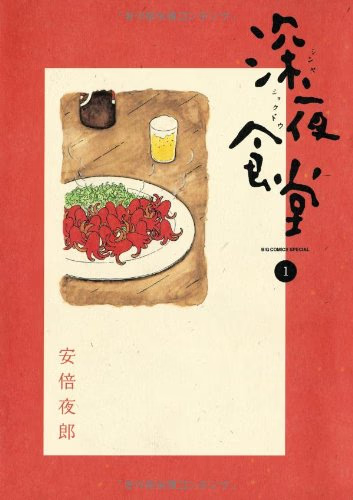
Yaro Abe (author) “Midnight Diner” Shogakukan 2007 ( Amazon )
 Kamii
KamiiThis is the butter rice that appears in the TV drama and film "Midnight Diner."
The original manga is set in a place reminiscent of Golden Gai, and each episode depicts the human drama of people gathering at a restaurant in the sleepless town, linked to the food they eat. I like the drama, but the characters have depth and interest that only manga can offer, so I enjoy both.
When I used to live in Yokohama, there was a restaurant I used to frequent. It was a little outside the shopping district, and the people of the shopping district would come to it after they closed their stores. When I went to eat dinner after work was late at night, the familiar people were always there. I started reading this book with a nostalgic feeling about those memories.
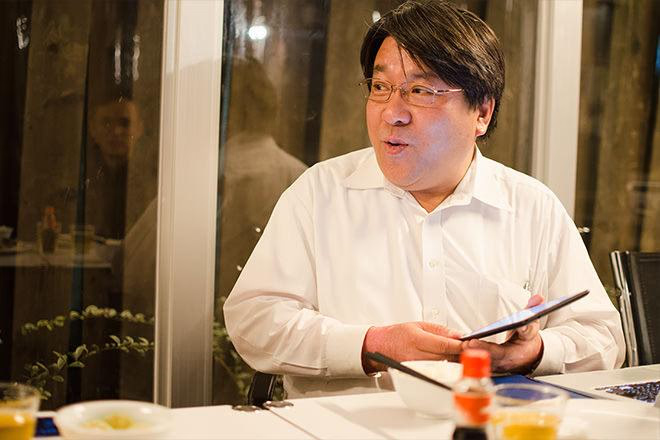
 Kamii
KamiiAmong them, the most memorable was this butter rice. When I read about it, I thought, "That sounds so good!" I remembered it for a long time, thinking that it would never end if I started to combine butter from this place with soy sauce from that place. Today is the first time I've had the chance to try it, so I'm looking forward to it.
 courtyard
courtyardWell then, let's eat.
How about a little soy sauce drizzled on it?
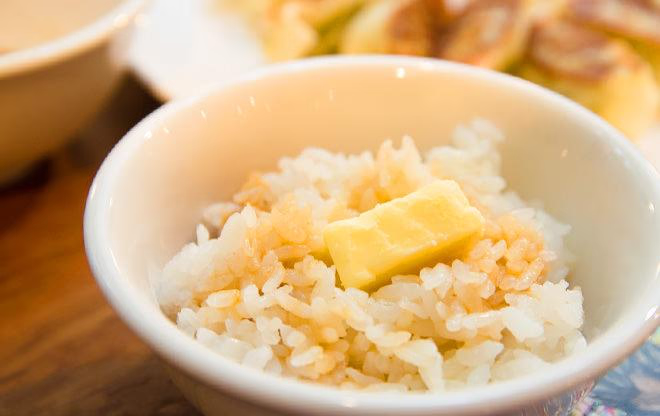
 Kamii
KamiiHmm. Ah, it's delicious. The soy sauce is delicious.
 courtyard
courtyardThe soy sauce used is from Shodoshima and is intended for eating with eggs on rice.
 Wada
WadaThis is a bit of a hassle, but it's definitely something you should do when you have food.
 Kamii
KamiiLike when I come home after drinking (laughs).
 courtyard
courtyardIs this a gourmet manga?
 Kamii
KamiiNo, I don’t think it’s gourmet.
The restaurant in Yokohama that I mentioned earlier was also a counter-only okonomiyaki restaurant, and if they ran out of flour, it was over. If the owner said, "We have this tonight," or "I'll have that," they would cook it for me. This Midnight Diner is the same. They only have a pork soup set menu, and they'll make whatever you ask for if they have the ingredients. That's the kind of restaurant it is.
Life is full of food, funerals, and money. The daily life of four sisters living in a seaside town.
"Our Little Sister" (reviewed by Yoshiko Nakaniwa)
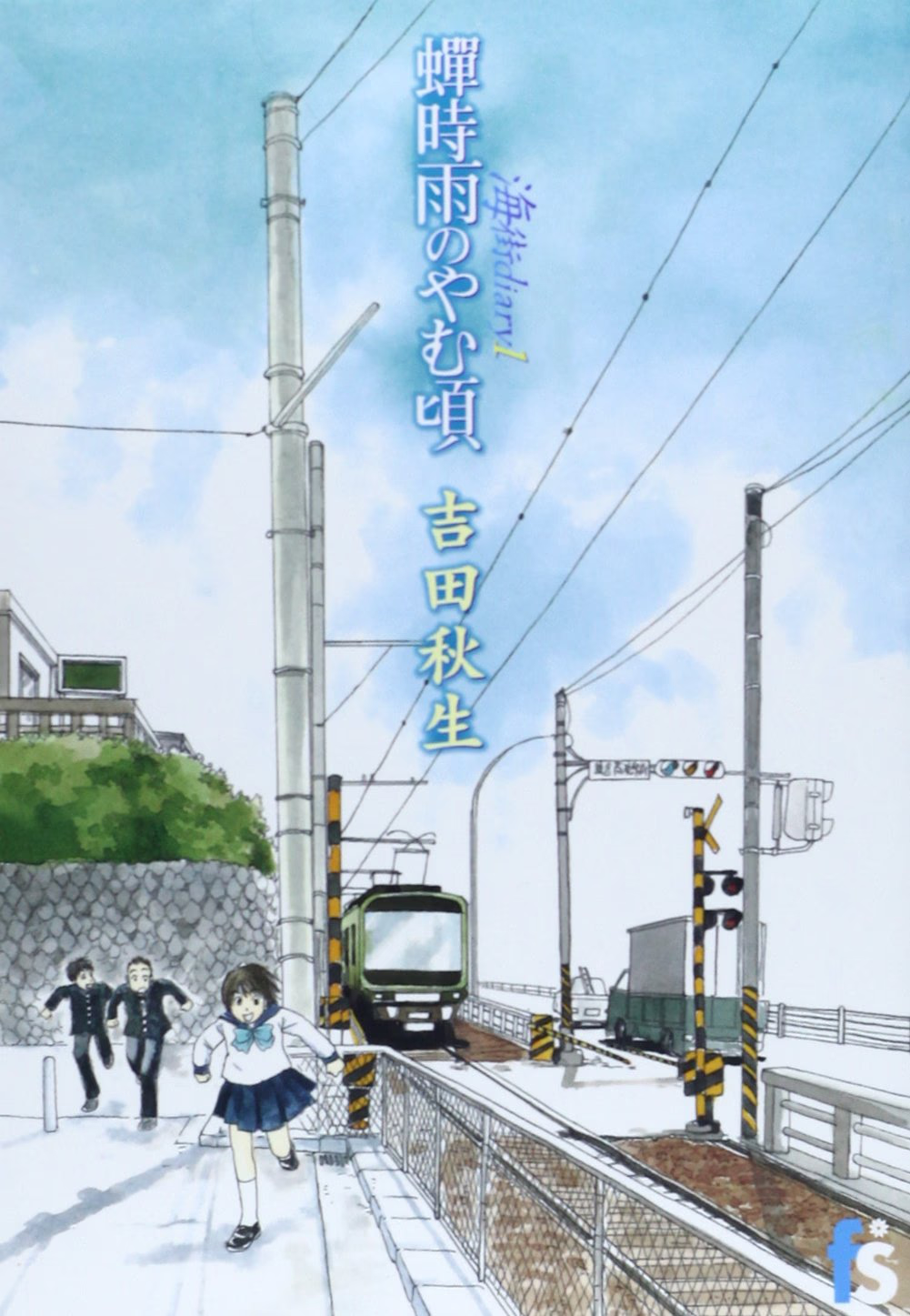
Akio Yoshida (author) "Our Little Sister" Shogakukan 2007 ( Amazon )
 courtyard
courtyardAre you familiar with "Our Little Sister", which was made into a movie last year?
Three sisters living in Kamakura take in their youngest half-sister...This is a manga that depicts the human relationships that revolve around four sisters.The story begins with the funeral of the father who abandoned his mother and left home a long time ago. The woman his father remarried died a few years ago, leaving his half-sister all alone.
Even though she is the younger sister, she is the child of the man who abandoned their mother and remarried, so they have many complicated emotions.However, when the three sisters meet their youngest sister for the first time at the funeral, they ask her, "Why don't you come live with us?" and take her in, just before the train headed back to Kamakura.The author, Yoshida Akimi, is known for her rather heavy style of work, such as "BANANA FISH" and "Kisshoten," but over time her manga has become more of a heartwarming style now, although there is still a harsh perspective underlying it.
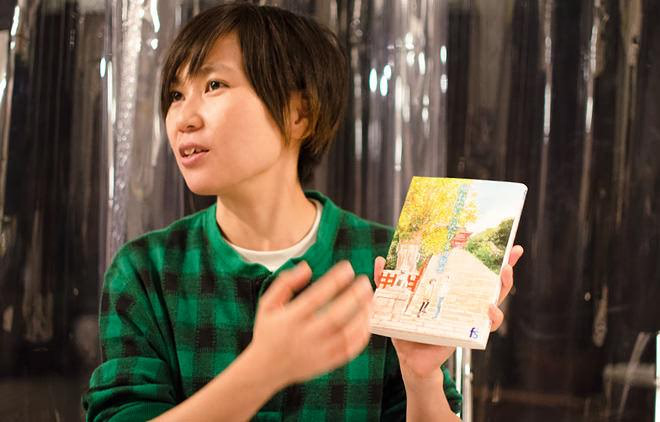
 courtyard
courtyardThe issues of death and money always come up. The story progresses with the theme of death and money, such as the story of the eldest daughter who works as a nurse at a hospital, and the second daughter who works at a local credit union. And food also comes up a lot at the same time.
The four sisters make plum wine and curry from the plum tree in their house. We also eat the delicious fried horse mackerel set meal at Uminoe Shokudo, a restaurant run by a local lady.
The lady dies of an illness, and there are issues with inheritance. It's a manga that deals with food and death.Her number one recommendation is "Shirasu Toast," a dish served at a cafe that Suzu-chan, a middle school student, and a boy who she seems to have a crush on, frequent.
Suzu-chan is a girl, but she is very good at soccer and plays on the same team as the boy. The two of them always look so delicious when they eat a set of shirasu toast and ginger milk tea at a local coffee shop.There is actually a restaurant that they say is the model for it, and I went to Kamakura to eat there (laughs).
So, when it comes to books that feature food, this book on whitebait toast is the only one I can think of! That's why I brought it with me.
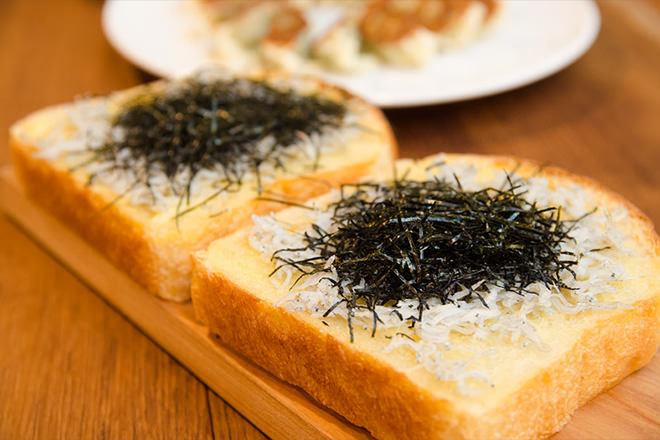
 Murakami
MurakamiIs Kamakura a specialty of shirasu?
 Kamii
KamiiShirasu is famous, especially when boiled.
 Murakami
MurakamiI had no idea. The seaweed flavor is amazing.
This is the first time I've combined bread with shirasu.
 Wada
WadaIt has a Japanese feel to it and is very delicious.
 courtyard
courtyardI'm glad. This manga is just a repetition of meals and funerals. Food is a part of human interaction, and death and money are always present in life, that's the theme after all.
"Now, let's cut it up and eat it." What exactly is this meatball hotpot in a manga where someone peels human skin?
"Golden Kamuy" (introduced by Isamu Murakami)

Noda Satoru (author) "Golden Kamuy" Shueisha 2015 ( Amazon )
 Murakami
MurakamiIt's a manga called "Golden Kamuy," and I heard it was interesting when I went on a recent family trip. It was introduced as a manga about "skinning people" (lol), but it also talks about cooking, so I bought it at the station on the way back from the trip.
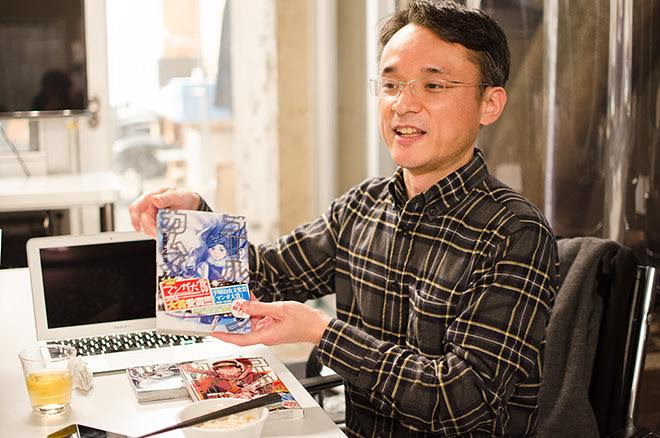
 Murakami
MurakamiThe story is set in Hokkaido just after the Russo-Japanese War. The story begins when the protagonist, who wants a large sum of money for the sick wife of his deceased war comrade, hears a story about a gold nugget hidden by the Ainu people.
The Ainu people were massacred and the gold bars they had collected to buy weapons to use against the Japanese were lost. The murderer was caught and put in Abashiri Prison, but in order to tell his comrades outside where the gold was hidden, he persuaded the prisoners by saying "If you manage to escape, I'll split it all," and tattooed a code onto their bodies. The tattoos also extend from the back to the chest, and the code cannot be understood unless they are cut and spread apart, which is why it is a "manga about skinning people."
Immediately after hearing this story, the protagonist is attacked by a brown bear, but is saved in the nick of time by a brave Ainu girl, and together they begin searching for the gold nuggets...
Now, as for the main part, the food, this Ainu girl catches wild animals with traps and eats them. For example, she sets a trap for a squirrel, catches it, skins it, washes the innards, and smashes the meat, bones and all, with a knife...Ainu people eat it raw, but since the main character is Japanese, she says, "I'll do it just for you," and serves it to him as a fishball hotpot.
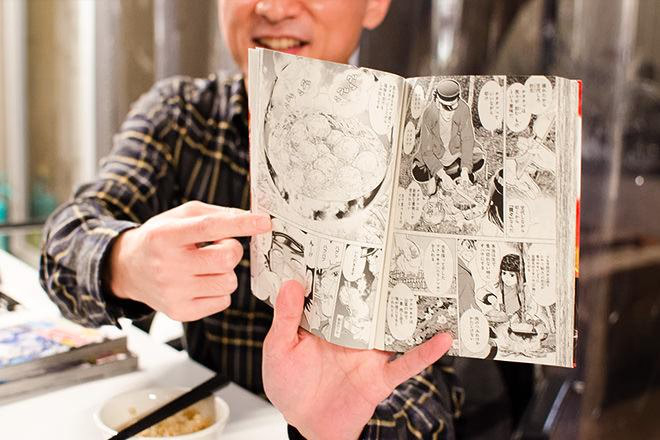
 Murakami
MurakamiAnd on the previous page it says "Eat the brains."
His expression at that moment was one that said, "You eat properly (serious)."The Ainu believe that wild animals and other useful creatures come from heaven in the form of animals to visit, bringing with them their fur and meat.
The Ainu culture and knowledge are introduced in detail at various times in the work, and I think it's obvious that a lot of research has been done. The historical background is interesting, and the scenes where they cook and eat are very expressive, and they eat with great gusto.
 Kamii
KamiiOh, it's an otter.
 Wada
Wada"Now, let's cut it up and eat it" (laughs)
 Murakami
MurakamiSuch a cute face, such lack of hesitation (laughs).
When I was little, I often watched my parents prepare the fish they had caught, and it reminded me of that and made me feel a bit nostalgic.
I've never butchered a mammal, but I imagine that's probably what it feels like.
After the reading group
The reading group introduced both delicious foods and things that people have never tried before.
Just reading a book just isn't enough! So I went there and actually ate something.
Perhaps because of the menu, the atmosphere felt a bit like an izakaya (though no alcohol was served).
It was a fun reading group that stimulated all five senses.
The next reading group will be on the theme of "My Best Book 2016 - The best book I read this year." See you next time!
